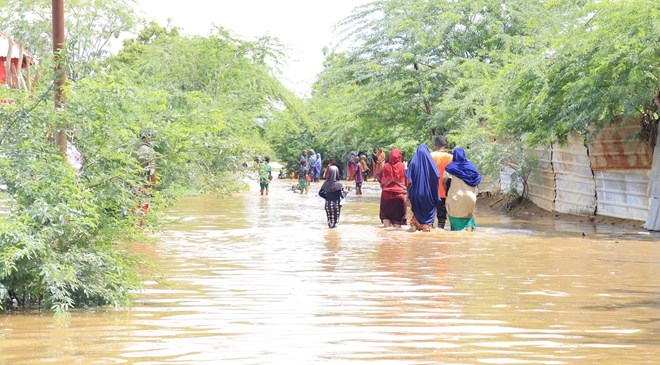MOGADISHU, Somalia – The Food and Agriculture Organization (FAO) of the United Nations on Friday warned of a high risk of severe flooding in Somalia in the next three days, putting thousands of people at immediate risk as river levels in parts of the country continue to rise.
FAO’s Somalia Water and Land Information Management (FAO-SWALIM) said there has been a notable increase in both the amount and intensity of rainfall in the Gedo Region and the Ethiopian Highlands in the recent past.
It said the ongoing heavy rainfall, coupled with the forecasted moderate rains in the next 24 hours, with an accumulation of approximately 150 mm over the next three days across Gedo, is expected to cause the river level to reach bank height.
“This presents a high risk of riverine flooding along the entire stretch of the Juba River,” FAO-SWALIM said in a flood advisory released in the Somali capital of Mogadishu.
It said there is also a high risk of flash flooding in the Gedo Region in southern Somalia, particularly in the Garbahaarey District within the next 24 hours. The floods come after the worst drought in four decades following five failed rainy seasons, which has decimated livestock and crops, pushing the country to the brink of famine.
The UN advised residents in low-lying and vulnerable areas to take all necessary precautions to ensure their safety while necessary anticipatory action is being taken.
According to the advisory, the runoff from forecast moderate rains within the catchment over the next three days in HirShabelle in south-central Somalia is likely to lead to a gradual rise in water levels with a moderate risk of flooding along the Shabelle River.
According to the FAO, there are also reports of high flood waves approaching the Somalia-Ethiopia border, which is projected to lead to a significant river level rise in four days.
The floods are the latest in a series of extreme weather events in recent years to hit Somalia, where children and communities find themselves at the sharp end of the global climate crisis.







